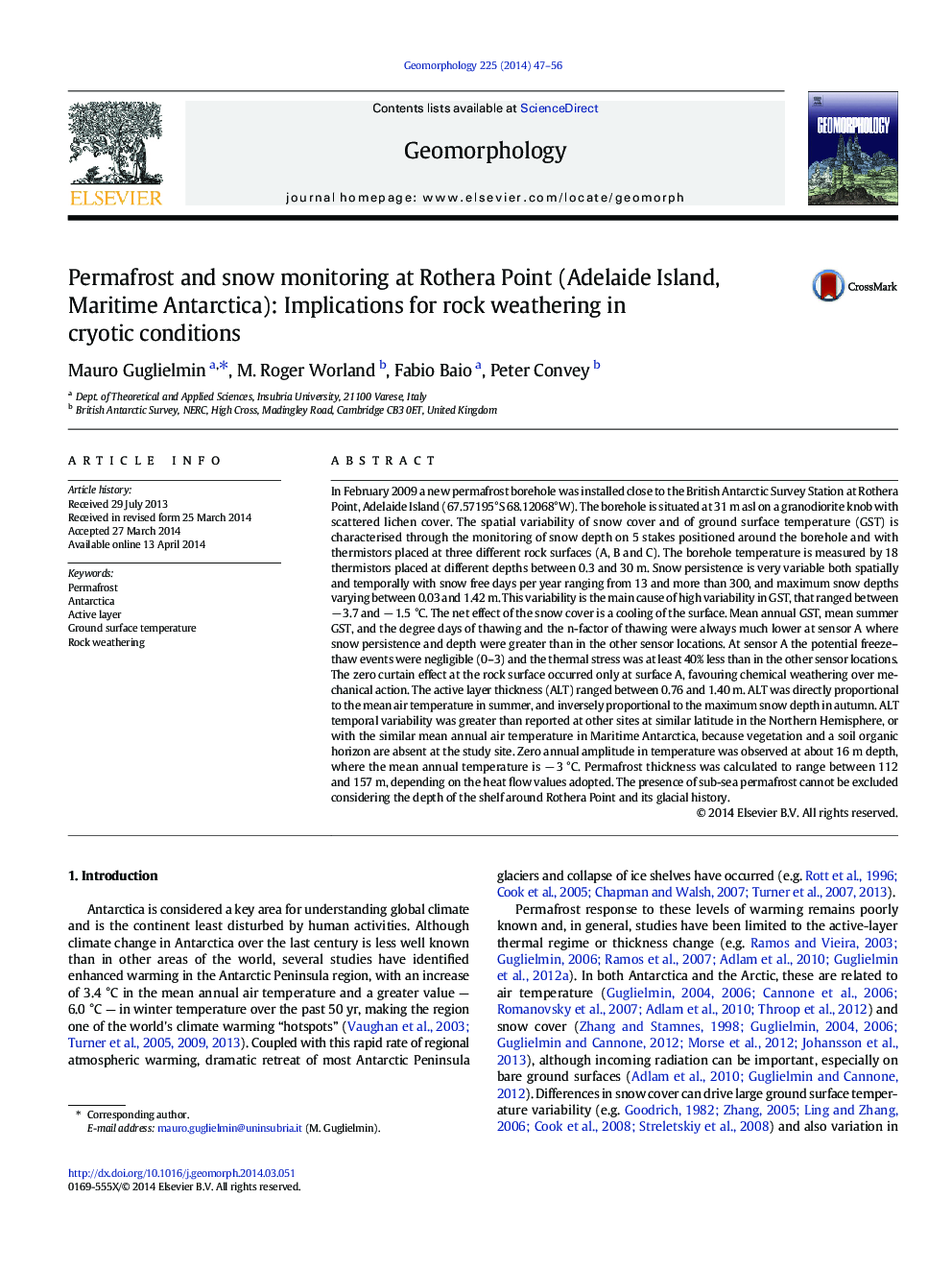| کد مقاله | کد نشریه | سال انتشار | مقاله انگلیسی | نسخه تمام متن |
|---|---|---|---|---|
| 4684466 | 1635424 | 2014 | 10 صفحه PDF | دانلود رایگان |

In February 2009 a new permafrost borehole was installed close to the British Antarctic Survey Station at Rothera Point, Adelaide Island (67.57195°S 68.12068°W). The borehole is situated at 31 m asl on a granodiorite knob with scattered lichen cover. The spatial variability of snow cover and of ground surface temperature (GST) is characterised through the monitoring of snow depth on 5 stakes positioned around the borehole and with thermistors placed at three different rock surfaces (A, B and C). The borehole temperature is measured by 18 thermistors placed at different depths between 0.3 and 30 m. Snow persistence is very variable both spatially and temporally with snow free days per year ranging from 13 and more than 300, and maximum snow depths varying between 0.03 and 1.42 m. This variability is the main cause of high variability in GST, that ranged between − 3.7 and − 1.5 °C. The net effect of the snow cover is a cooling of the surface. Mean annual GST, mean summer GST, and the degree days of thawing and the n-factor of thawing were always much lower at sensor A where snow persistence and depth were greater than in the other sensor locations. At sensor A the potential freeze–thaw events were negligible (0–3) and the thermal stress was at least 40% less than in the other sensor locations. The zero curtain effect at the rock surface occurred only at surface A, favouring chemical weathering over mechanical action. The active layer thickness (ALT) ranged between 0.76 and 1.40 m. ALT was directly proportional to the mean air temperature in summer, and inversely proportional to the maximum snow depth in autumn. ALT temporal variability was greater than reported at other sites at similar latitude in the Northern Hemisphere, or with the similar mean annual air temperature in Maritime Antarctica, because vegetation and a soil organic horizon are absent at the study site. Zero annual amplitude in temperature was observed at about 16 m depth, where the mean annual temperature is − 3 °C. Permafrost thickness was calculated to range between 112 and 157 m, depending on the heat flow values adopted. The presence of sub-sea permafrost cannot be excluded considering the depth of the shelf around Rothera Point and its glacial history.
Journal: Geomorphology - Volume 225, 15 November 2014, Pages 47–56